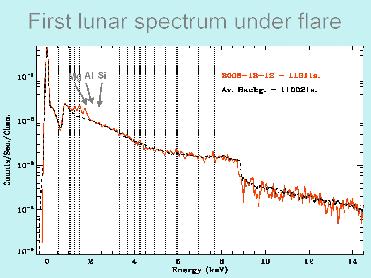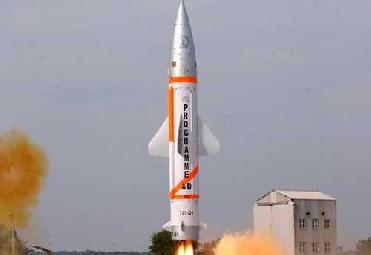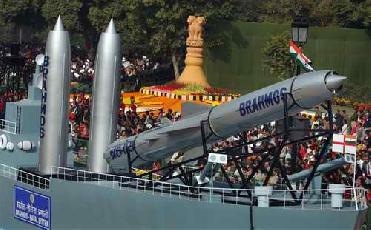
First lunar spectrum under flare. ISRO image
BANGALORE (BNS): A payload on board Chandrayaan-I has successfully detected the first X-ray signature from the moon. The detection would significantly boost the mission�s efforts to understand the origin and evolution of the Moon by mapping its surface composition.
�The Imaging X-ray Spectrometer, one of the 11 payloads onboard Chandrayaan-1 spacecraft, jointly developed by the Indian Space Research Organisation (ISRO) and UK�s Rutherford Appleton Laboratory, has successfully detected the first X-ray signature from the Moon,� the Indian Space Research Organisation said in a statement on Friday.
Dr G Madhavan Nair, Chairman, ISRO said the joint development and operationalisation of C1XS in Chandrayaan-1 between ISRO and RAL, UK is a major achievement. �First signatures obtained from C1XS are highly encouraging,� he said.
Chandrayaan-1 Imaging X ray Spectrometer (C1XS) detected the X-ray signal from a region near the Apollo landing sites on December 12, 2008, ISRO said. �The solar flare that caused the X-ray fluorescence was exceedingly weak, approximately 20 times smaller than the minimum C1XS was designed to detect,� the space agency said.
The X-ray camera collected 3 minutes of data from the Moon just as the flare started and the camera finished its observation. C1XS (pronounced �kicks�) depends on radiation from the Sun to activate the detection of X rays. �The minimum in solar activity was expected to end in early 2008, however solar activity is yet to reach the anticipated increase. With the highly sensitive C1XS instrument, it has been possible to detect the X rays,� the Indian space agency said.
This is the first step in the mission of Chandrayaan-I, which was launched on October 22 last year, to reveal the origin and evolution of the Moon by mapping its surface composition. Chandrayaan-I had entered the lunar orbit on November 8.
The camera - C1XS� was designed and built at the Space Science and Technology Department of the Rutherford Appleton Laboratory in collaboration with ISRO. It is an X-Ray Spectrometer that uses X-rays to map the surface composition of the Moon and will help scientists to understand its origin and evolution, as well as quantifying the mineral resources that exist there.
Chandrayaan-1 is the first lunar mission of ISRO and also the first mission with international partners. It is designed to orbit the Moon at an altitude of 100 km and carries 11 scientific instruments including radar and particle detectors as well as instruments that will make observations in the visible, near infrared and soft and hard X-rays.
 Previous Article
Previous Article Next Article
Next Article












The Indian Air Force, in its flight trials evaluation report submitted before the Defence Ministry l..
view articleAn insight into the Medium Multi-Role Combat Aircraft competition...
view articleSky enthusiasts can now spot the International Space Station (ISS) commanded by Indian-American astr..
view article